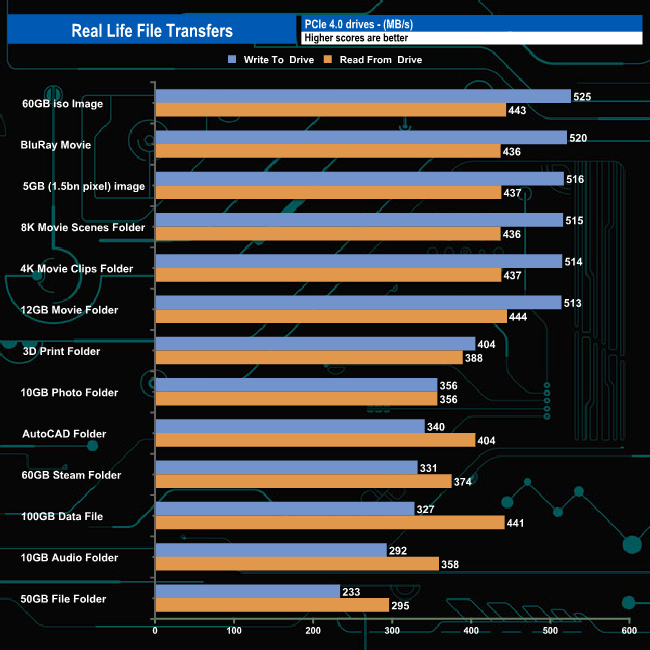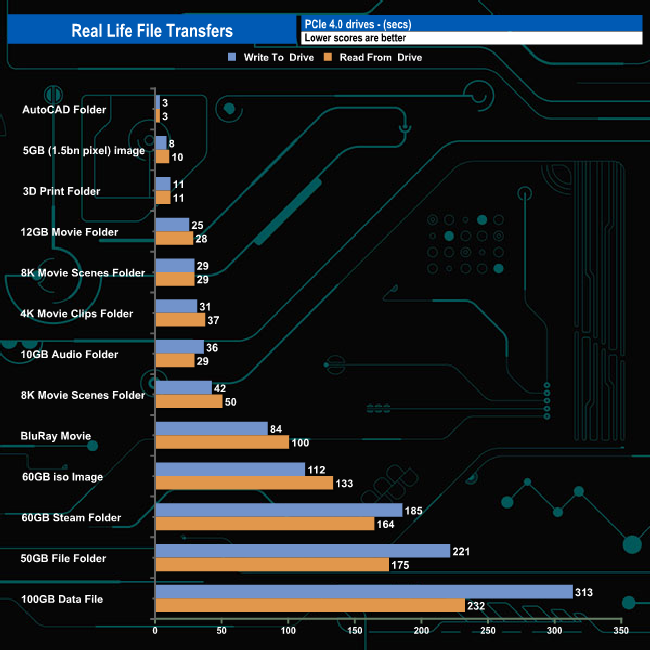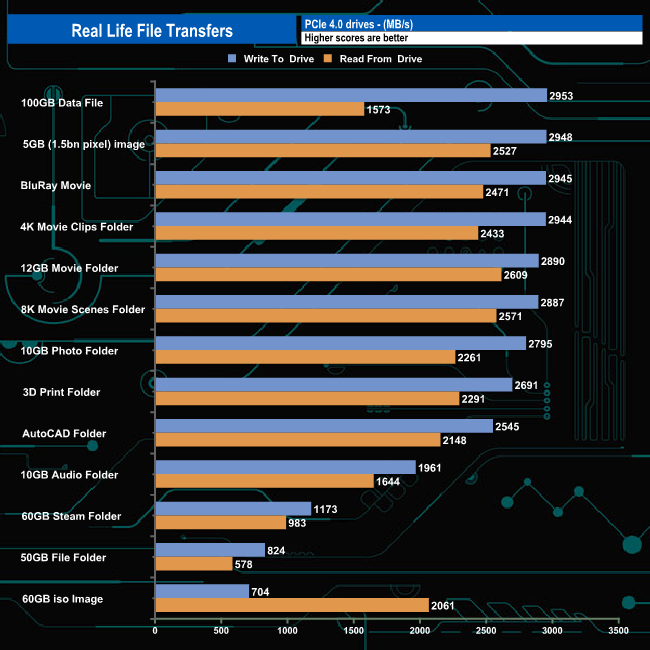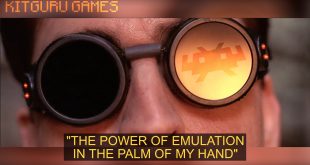To test real life performance of a drive we use a mix of folder/file types and by using the FastCopy utility (which gives a time as well as MB/s result) we record the performance of drive reading from & writing to a 256GB Samsung SSD850 PRO.
- 100GB data file.
- 60GB iso image.
- 60GB Steam folder – 29,521 files.
- 50GB File folder – 28,523 files.
- 12GB Movie folder – (15 files – 8 @ .MKV, 4 @.MOV, 3 @ MP4).
- 10GB Photo folder – (304 files – 171 @ .RAW, 105@ JPG, 21 @ .CR2, 5 @ .DNG).
- 10GB Audio folder – (1,483 files – 1479 @ MP3, 4@ .FLAC files).
- 5GB (1.5bn pixel) photo.
- BluRay Movie – 42GB.
- 21GB 8K Movie demos – (11 demos)
- 16GB 4K Raw Movie Clips – (9 MP4V files).
- 4.25GB 3D Printer File Folder – (166 files – 105 @.STL, 38 @ .FBX, 11 @ .blend, 5 @ .lwo, 4 @.OBJ, 3@ .3ds).
- 1.5GB AutoCAD File Folder (80 files – 60 @ .DWG and 20 @.DXF).
The drive was very consistent when dealing with the larger file transfers in our real-life file transfer tests averaging 438MB/s when writing to the drive and 517MB/s when reading them back. The fastest transfer was for the 60GB iso image with the slowest being the 50GB file folder transfer.
To get a measure of how much faster PCIe NVMe drives are than standard SATA SSDs we use the same files but transfer to and from a 2TB Kioxia Exceria Plus drive:
Swapping over to an all NVMe architecture saw transfer speeds rocket with nine out of the thirteen write transfers topping well above 2.5GB/s. The faster write transfer was for the 100GB data file at 2,953MB/s and somewhat surprisingly, the slowest was the 60GB iso transfer although when reading the data back the drive topped the 2GB/s mark.
 KitGuru KitGuru.net – Tech News | Hardware News | Hardware Reviews | IOS | Mobile | Gaming | Graphics Cards
KitGuru KitGuru.net – Tech News | Hardware News | Hardware Reviews | IOS | Mobile | Gaming | Graphics Cards





